Est. 450 hp, 426 cu. in. Chrysler Hemi V8 engine with Hilborn fuel injection, Chrysler A-727 TorqueFlite three-speed automatic transmission, CAE tubular straight front axle with transverse leaf spring, live rear axle with full-elliptic leaf springs, and two-wheel drum brakes.
To thousands of custom-car fans who grew up during the 1960s, Ray Fahrner created some of the most memorable and radical show rods of all time. Fahrner, who sadly passed away in 2005, first came to prominence in the late 1950s with his groundbreaking 1932 Ford Roadster Pickup dubbed the Eclipse, which somehow managed to bridge the rapidly growing divide between custom and hot rod vehicles. Once on the map, Fahrner’s Independence, Missouri-based custom shop continued to push the edge of the custom-car design envelope during the 1960s, with his work truly echoing the unbridled creativity and experimental nature of American society during the turbulent 1960s.
By 1967, Fahrner completed what many believe to be his signature creation, the outrageous “Boothill Express”. As a basis for this stunning vehicle he chose a circa-1850 horse-drawn funeral coach by Cunningham of New York, which reportedly carried James Gang member Bob Younger to his grave on “Boot Hill”. Featuring solid and stately construction, the exterior of the wooden hearse body displays ornate carved moldings as well as a set of brass lamps reportedly dating to late 18th-century India at the front and rear of the vehicle. Inside, the hearse is fitted with proper funeral equipment, including tasseled velvet curtains and a set of polished coffin rails.
The chrome-plated suspension features a gasser-style CAE tubular solid front axle and hairpins, along with a simple, yet effective steering system from a 1963 Volkswagen Beetle up front. At the rear, a pair of full-elliptic leaf springs, a 1948 Ford rear end and a pair of drum brakes round out the suspension features. The engine is completely outrageous – a 426 cubic inch Chrysler Hemi V8 topped by Hilborn fuel injection, with extra-tall velocity stacks jutting through the top of the hearse body, while eight individual pipes route the spent exhaust gases to the rear of the vehicle. A stout pushbutton-operated Chrysler A-727 TorqueFlite automatic transmission handles the engine’s output, while the car’s aggressive rake is provided by a pair of E-T 10-spoke spindle-mounted front wheels, along with taller and wider Cragar S/S wheels and Goodyear Blue Streak slicks at the rear. Other features include a Ford Model T steering wheel, a Moon hydraulic throttle and canister-style fuel tank as well as an instrument cluster fitted with Stewart-Warner gauges. The open bench-type front seat features black diamond-tufted upholstery.
Following its completion, the Boothill Express formed part of Fahrner’s “Boothill Caravan” travelling show, which toured dragstips and the auto show circuit nationwide during the late 1960s, thrilling countless spectators nationwide. And in the best 1960s show-rod tradition, the Boothill Express was immortalized with the 1967 release of a 1:24-scale plastic model kit by Monogram, complete with a skeleton packing a six-shooter and wearing a 10-gallon hat. In fact, due to strong public demand, the model kit was reissued in 1994.
Today, the Boothill Express benefits from an expert detailing and is offered in period correct, unrestored condition. It is ready to resume its show career, or to form the prized centerpiece of a carefully assembled collection of the most famous and iconic show rods ever created. The Boothill Express truly remains a lasting tribute to the wild genius of Ray Fahrner, a custom-car legend with an unbridled imagination.
Sold at auction by RM Auctions on Saturday, September 26, 2009 for $126,500 |









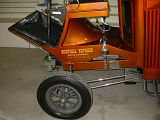
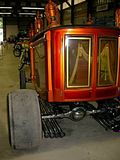

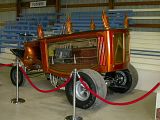
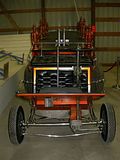
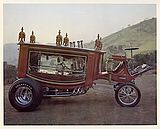
|




